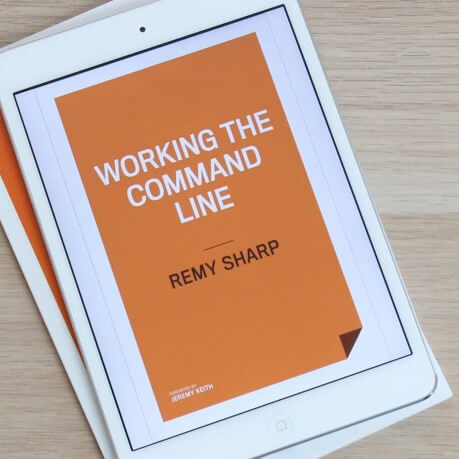Printing web pages is often forgotten about and there's nothing more annoying than printing out a web page that comes out in one long, half page width column spanning 5 pages when it should be 2.
You don't need to have a completely separate page for print either. All too often we see web sites creating popups with print versions of their pages. In most cases, it's not required. All that you need is a well thought through print style sheet.

MY EBOOK£5 for Working the Command Line
Gain command-line shortcuts and processing techniques, install new tools and diagnose problems, and fully customize your terminal for a better, more powerful workflow.
£5 to own it today
Build on top of what you have
Rather than having one screen style sheet and one for print (there are 8 others by the way), it should be a lot easier to use the print style sheet on top of the screen style to change the appearance of your site - remembering that you may still want to retain some branding.
<link media="screen,print" rel="stylesheet" type="text/css" href="/css/main.css" />
<link media="print" rel="stylesheet" type="text/css" href="/css/print.css" />
Have an easy way to test your print style
You can waste precious time going back and forth from the normal page to the print preview - so build in a method of previewing the print style (note you can also use the Firefox developer toolbar > CSS > Display CSS by media type).
This is what I do so I can request any page and include '?print_style' to preview my print style:
<link media="<?php
if (isset($\_GET['print\_style'])) {
echo 'screen';
else
echo 'print';
}
?>" rel="stylesheet" type="text/css" href="/css/print.css" />
Remove redundant blocks
Remove the header, remove the footer† and remove the sidebar.
† But remember to keep your copyright
Then look through the page and find anything that does not constitute as information, or would not be useful once the page is printed - and get rid of it. A simple example can be seen on my blog - I've removed the comments form in the print style sheet.
Do not remove anything that would constitute as information to the customer or user.
Think about the contrast
If you're site is light text on a dark background, switch it around for the print style sheet.
Try to think about how much ink you want to use up. This isn't so relevant on small blocks of text or images, but you should consider it.
A point for discussion, is some sites offer a high contrast version of their site for people with visual impairment - are there printers that support this as an option, or should we in fact keep the high contrast on print?
I suspect the best solution is to test whether they have selected a high contrast view, and use an alternative print style sheet matching the user's needs.
Make it work on paper
Width
Set your print width out to 100%.
From a practical point of view, the best way to achieve this is to set 'width: 100%' on the BODY tag and 'width: auto' on any container elements with fixed widths that should be stretched out.
Expand out links and abbreviations
The problem with print, is that you can't follow the links on the page, and most times you can't see where the links would have gone.
You can help by expanding out the links and abbreviations in the print style, using the pseudo selector ':after'.
A:after {
content: " (" attr(href) ")";
}
ABBR:after {
content: " (" attr(title) ")";
}
Note that IE (up to, and including 7) still doesn't support this selector, so you've made the Firefox and Safari users lives a little easier.
Let the user decide
If possible, let the user decide what should be included in the printout. This would mean using a server-side script to generate the print style on the fly.
Check box options could include:
- Include comments (for blogs or articles)
- Expand links
- Expand abbreviations
- Print page as displayed on screen
Watch out for bugs
Just like your web site design, make sure you're careful to test your print design. Here are a couple of bugs I came across in some recent print testing:
- Firefox sometimes hide text when printed (though not in my browser preview) - I found this only happened to text was floated right, so I the used float:none fixed the problem.
- Safari 2 sometimes mangles expanded links - one link may appear as the href for several other links. However, this is fixed in the latest Webkit
Anything else?
If you think I've missed an important tip, please let me know and I'll add in the best tips.